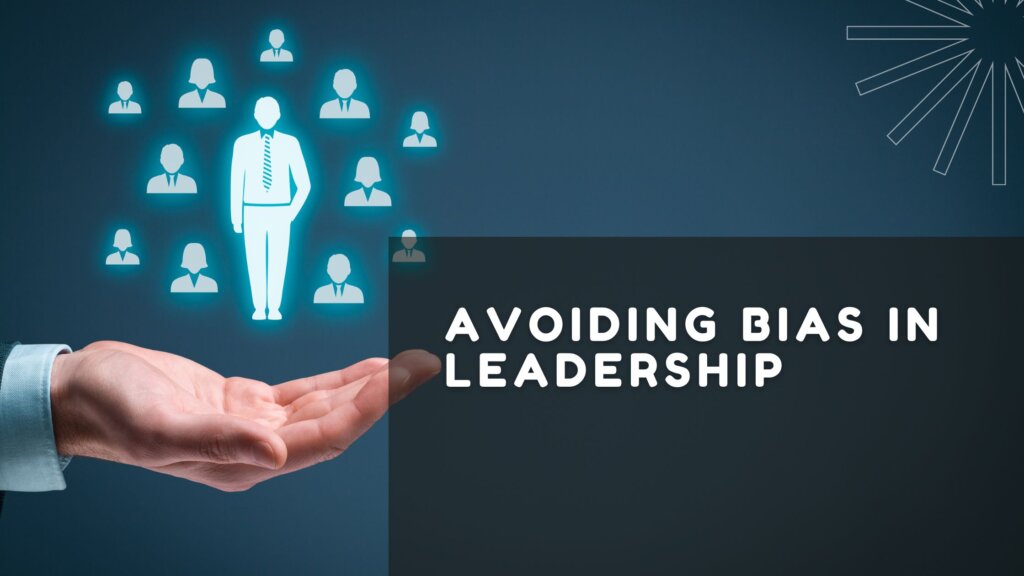
Avoiding bias in leadership is essential for creating a fair, inclusive, and effective work environment where all team members feel valued, respected, and empowered to succeed. Bias, whether conscious or unconscious, can manifest in various forms, including gender bias, racial bias, age bias, and cognitive bias, among others. Recognizing and mitigating bias in leadership requires self-awareness, empathy, and a commitment to promoting diversity, equity, and inclusion.
Here are some strategies for avoiding bias in leadership:
Educate Yourself About Different Forms of Bias:
Take the time to educate yourself about the various forms of bias that can influence decision-making and behavior in the workplace. Familiarize yourself with unconscious bias, stereotype threat, and affinity bias and how they can manifest in leadership roles.
Examine Your Own Biases:
Engage in self-reflection and introspection to identify any biases you may hold, both conscious and unconscious. Reflect on your upbringing, experiences, and cultural background, and consider how these factors may influence your perceptions, attitudes, and behaviors toward others. Be honest with yourself about your biases and commit to addressing them proactively.
Promote Diversity and Inclusion:
By actively encouraging diversity in the hiring, promotion, and decision-making processes, you may cultivate a culture of diversity, equity, and inclusion inside your company. When building teams or making strategic decisions, seek various viewpoints, experiences, and backgrounds.
Practice Conscious Decision-Making:
Be mindful of the potential impact of bias on your decision-making processes, and strive to make decisions based on merit, performance, and objective criteria rather than personal preferences or stereotypes.
Create Structured Processes and Systems:
Implement structured processes and systems to minimize the influence of bias in key areas such as hiring, performance evaluation, and promotion. Use standardized criteria and assessment tools to evaluate candidates objectively and establish clear guidelines and criteria for decision-making to reduce the likelihood of subjective biases creeping in.
Encourage Open Dialogue and Feedback:
Encourage your team members to speak up about any bias or discrimination they may experience at work by creating a welcoming environment. Encourage open dialogue and feedback, and create channels for employees to report instances of bias or discrimination confidentially and without fear of retaliation.
Lead by Example:
As a leader, your actions and behaviors set the tone for the organization. Lead by example by demonstrating a commitment to diversity, equity, and inclusion in your words and actions. Regard every team member with decency, equity, and respect, irrespective of their origins, identities, or positions.
Continuously Learn and Grow:
Keep up with the most recent findings, recommended procedures, and developments concerning inclusion, equity, and diversity in leadership. Make continual investments in education and training to increase your comprehension of bias and create plans for reducing its effects.
Avoiding bias in leadership requires a concerted effort to recognize, address, and mitigate bias in decision-making, behavior, and organizational processes. By educating yourself about bias, examining your own biases, promoting diversity and inclusion, practicing conscious decision-making, creating structured processes and systems, encouraging open dialogue and feedback, leading by example, and continuously learning and growing, you can foster a fair, inclusive, and equitable work environment where all team members can thrive.
